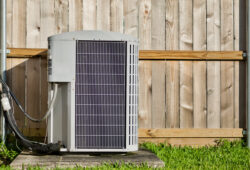A Step-by-Step Guide to Checking Your AC Refrigerant Levels

As the summer heat sets in, a properly functioning air conditioning unit becomes essential for maintaining a comfortable home. One crucial aspect of AC maintenance is ensuring adequate refrigerant levels.
Understanding What Refrigerant Is
Refrigerant is a substance used in air conditioning systems to absorb heat from the indoor environment and release it outside, thereby cooling the air. It undergoes a continuous cycle of evaporation and condensation, absorbing heat when it evaporates and releasing heat when it condenses. The most common type of refrigerant used in residential and commercial AC units is known as R-22 or R-410A, depending on the age of your system.
Signs of Low Refrigerant Levels
When the refrigerant levels in your AC unit are low, it can lead to a variety of problems, including reduced cooling capacity and increased energy consumption. Here are a few signs that may indicate low refrigerant levels in your system:
- Insufficient cooling: If you notice that your AC is not cooling your space as effectively as it used to, despite running for extended periods, it could be a sign of low refrigerant levels.
- Longer cooling cycles: Low refrigerant levels force your AC unit to work harder to achieve the desired temperature. As a result, the cooling cycles may become longer than usual.
- Ice formation: Insufficient refrigerant can cause ice to form on the evaporator coils of your AC unit. If you observe ice buildup on the unit or along the refrigerant lines, it is an indication of low refrigerant levels.
- Hissing sounds: A hissing or bubbling noise coming from the AC unit may suggest a refrigerant leak. If you notice such sounds, it is crucial to inspect and address the issue promptly.
Testing Refrigerant Levels
To check the refrigerant levels in your AC unit, follow these step-by-step instructions:
Step 1: Safety First
Before starting any maintenance work, ensure that the AC unit is switched off and unplugged to avoid any electrical hazards.
Step 2: Locate the Service Valve
Identify the service valves on your AC unit. There are two valves: The larger one is the suction line valve (low-pressure side), and the smaller one is the liquid line valve (high-pressure side). These valves may be located near the compressor or on the refrigerant lines.
Step 3: Attach Gauges
Attach the refrigerant gauges to the service valves. The blue hose should be connected to the suction line valve (low-pressure side), and the red hose should be connected to the liquid line valve (high-pressure side). Keep the yellow hose unconnected for this process.
Step 4: Read the Gauges
Once the gauges are properly attached, turn on the AC unit and let it run for a few minutes to stabilize. Observe the pressure readings on the gauges. The pressure readings will vary depending on the type of refrigerant used as well as the ambient temperature.
Step 5: Compare With Manufacturer Recommendations
Refer to the manufacturer’s specifications or consult with a professional to determine the ideal refrigerant pressure range for your AC unit. Compare the readings on the gauges with the recommended range. If the pressure is significantly below the recommended range, it may indicate low refrigerant levels.
Step 6: Seeking Professional Assistance
If you suspect low refrigerant levels or encounter abnormal pressure readings, you should contact a qualified HVAC technician. They have the expertise and tools to accurately diagnose refrigerant issues and perform any necessary repairs or recharging.
Trust Parker’s With Your AC Maintenance Needs!
Checking the refrigerant levels in your air conditioning unit is an important part of routine maintenance. By understanding the signs of low refrigerant levels and following the step-by-step instructions provided, you can ensure that your AC system is operating efficiently and effectively.
Remember, if you encounter any difficulties or suspect refrigerant problems, it’s always best to seek professional assistance to avoid any further damage to your AC unit. At Parker’s, our team offers the comprehensive air conditioning maintenance solutions you need to ensure your system is always equipped with the proper refrigerant levels.
Call Parker’s at 615-355-9137 or contact us online if you need AC maintenance or repairs.
What To Expect
Discover the Difference
Family Owned
& Operated
Our family-owned company has earned a reputation for quality, integrity, and excellence.
Upfront
Pricing
With our clear and transparent pricing, you don’t have to worry about surprise costs.
Trained
Technicians
Our NATE-certified technicians are always up to date with the latest HVAC practices.
Extended
Warranties
We back our quality workmanship with extended warranties for your peace of mind.
Commitment
to Community
As a locally-owned company in Middle Tennessee, we proudly serve our neighbors.
Easy
Financing
Your budget should never get in the way of your comfort, so we offer easy financing options.




